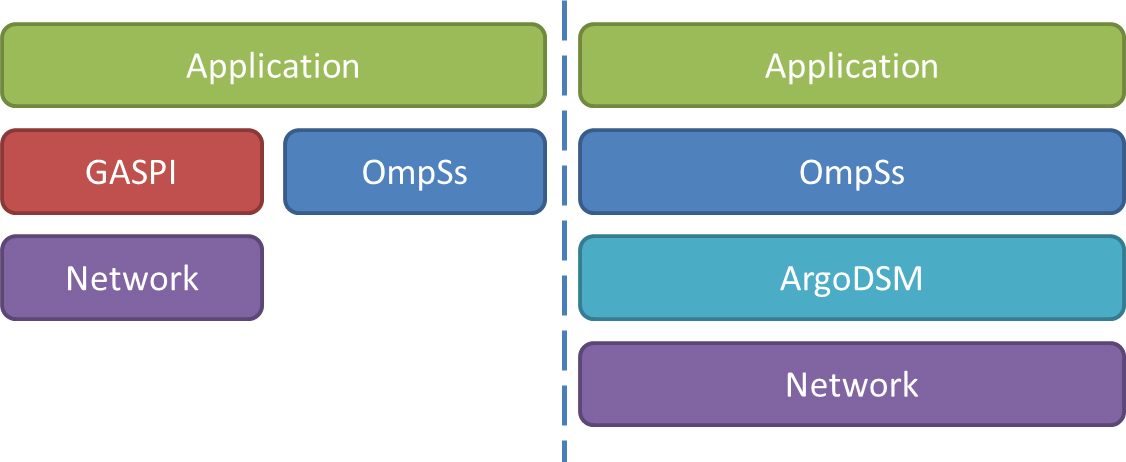The common goal in the EU project EPEEC is the development and deployment of a production-ready parallel programming environment that turns predominantly heterogeneous exascale computers into manageable platforms for application developers. Our part is the implementation of the distributed programming model GASPI together with its GPI implementation.
The High Performance Community is working to manage the heterogeneity of future exascale computers. To do so, different processing unit architectures (such as GPUs and FPGAs) as well as heterogeneous storage systems and networks have to be considered. The EPEEC project meets this challenge by bringing together five software components developed by European research institutions and companies, adapting them to the respective programming environment and further elaborating them.
One of these five is the programming model GASPI developed at our institute, which has established itself as the European market leader for one-way communication between computing nodes.
Our Contribution to the Project
Especially in applications such as machine learning, compression is an important tool for processing the sometimes huge amounts of data. With the help of our parallel programming model GPI we use the so-called »Lossy Compression« to relieve networks. Examples of data-intensive tasks are the development of new drugs or the further development of Recommender System, which makes recommendations based on previous user activities (purchases, watched movies, etc.).


